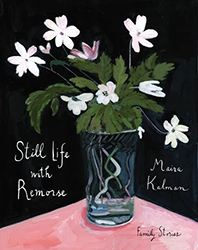Hand-lettered and illustrated with vivid paintings and photographs, Sara Berman’s Closet provides the backstory of an immensely popular 2017 exhibit at New York City’s Metropolitan Museum of Art. Illustrated by Maira Kalman (Sara Berman’s daughter) and co-written and photographed by Maira and Alex Kalman (Sara’s grandson), the book is a tribute to a woman’s journey through life.
Sara’s memories of her early years in Belarus are recounted in childlike, elliptical recollections: “Yes, there were pogroms. Yes, there was deprivation. But Life was not all bad.… There were wild blueberry forests where the children ran wild.” She and her sister were avid readers who, despite living simply in a hut along the River Sluch, cherished works by Tolstoy, Dostoevsky, and Chekhov.
When she was twelve years old, Sara’s family moved to Palestine. Life in this new country was full of hardships, but Sara’s rich imagination peopled it with celebrities including Gandhi, Arturo Toscanini, and Gertrude Stein. Later in the book, vignettes of her marriage to Pesach, a charming man-about-town, foreshadow the core of dissatisfaction that would lead her to abandon the marriage thirty-eight years later.
When she figuratively “cut” her husband out of her life — a spread shows halves of photographs with only Sara visible — the result is “announced” on a blank page: “It was a Liberation.” Sara goes on to gain a level of self-realization that few women of her time and background achieved.
Echoing Virginia Woolf’s famous 1929 feminist text, Sara acquired a “room of her own” in New York City. She pared her belongings down to the essentials, organizing them artfully. Her activities were simple but meaningful to her. She decided to wear only white to express a Zen-like existence. Her early habits from Belarus and Palestine resurfaced as she “starched, ironed, folded and stacked everything with loving care and precision.”
How Sara’s closet became an art installation some ten years after her death is not made entirely clear, but her clarity of vision and courage are well delineated. The authors convey the message that an individual’s life, when lived meaningfully, can be seen as a work of art.





